Imagine walking into an office where the signs look polished, modern, and professional. Instantly, you think: “This business is organized and credible.”
Right away, you’d think, “Wow, these people are professional and organized.”
That’s the power of well-designed interior office signs. Not only do these signs enhance your office’s appearance, they improve navigation, safety, and overall visitor experience.
At MetroCenter Signworks, we help Nashville businesses design and install custom office signs that reflect their brand and elevate professionalism. In this guide, we’ll cover the six types of interior office signs every business needs, plus tips for making them stand out.
Table of Contents
ToggleWhy Interior Office Signs Matter
Office signage guides employees and visitors, reinforces your brand identity, and ensures compliance with safety regulations.
Stats & Insights:
- Professional signage can increase first impressions and perceived credibility by up to 75%.
- Effective wayfinding signage can reduce time spent searching for rooms by 30–40%.
- ADA-compliant signage improves accessibility for approximately 15% of the population.
Proper office signs make your space functional, safe, and welcoming—helping both staff and visitors feel confident navigating your office.
6 Types of Interior Office Signs Every Business Needs
Here’s a quick table to help you compare the six key types of office signs:
| Sign Type | Purpose | Placement | Example/Benefit |
|---|---|---|---|
| Lobby Signs | First impressions & brand anchoring | Reception area | Feature wall or behind desk |
| Wayfinding Signs | Guide visitors & employees | Hallways, stairwells, elevators | Restrooms, conference rooms |
| Directional Signs | Navigate quickly | Hallways, intersections | Arrows, room numbers |
| ADA Signs | Accessibility & compliance | Restrooms, exits, doors | Braille and tactile text |
| Reception Signs | Welcome visitors, provide info | Waiting area, desk | Hours, instructions, welcome |
| Safety Signs | Protect staff and visitors | Exits, high-risk areas | Emergency, warning, mandatory |
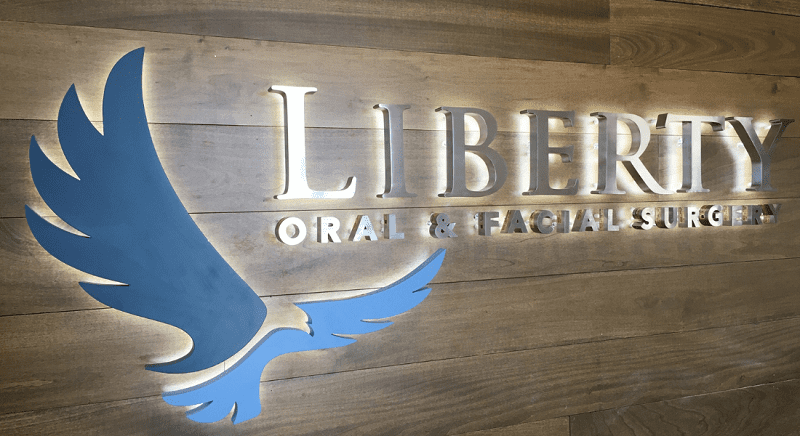
1. Lobby Signs
Your Lobby sign is often the first thing visitors notice. A clean, professional sign sets the tone for your office and reinforces your brand.
Tips for a professional lobby sign:
- Place it behind the reception desk or on a feature wall.
- Use premium materials like acrylic, brushed metal, or glass.
- Match your company colors, logo, and fonts.
- Add lighting, such as backlit LEDs, to create depth and focus.
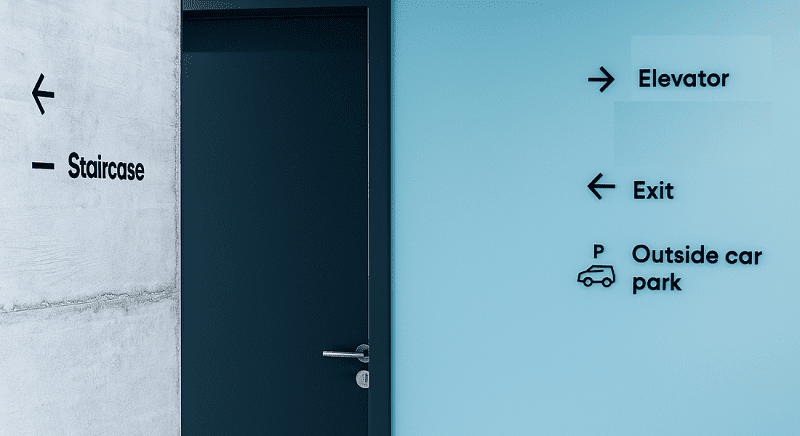
2. Wayfinding Signs – Improve Office Navigation
Wayfinding signs help employees and visitors find their way without confusion. From restrooms to conference rooms, clear signage reduces delays and frustration.
Placement Tips:
- Near elevators, stairwells, hallways, and decision points.
- Include clear text, icons, and consistent colors matching your branding.
- Highlight key areas: departments, exits, restrooms, and meeting rooms.
Stat: Offices with proper wayfinding signage report up to 40% less time spent searching for rooms.
Internal Link Suggestion: Link to your page on [Wayfinding Signs for Businesses in Nashville].
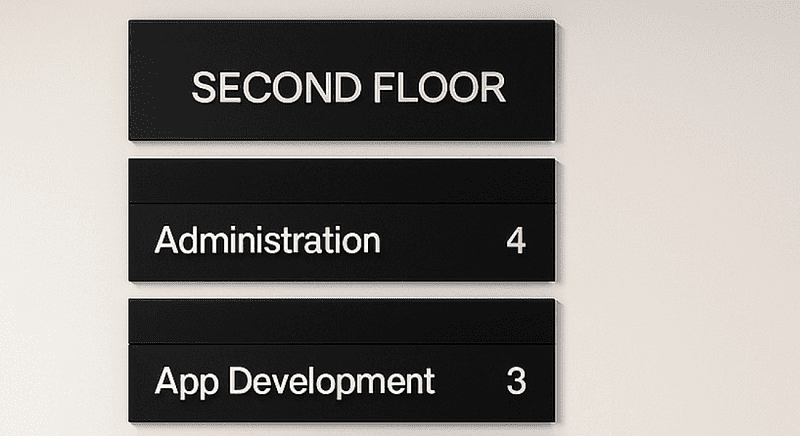
3. Directional Signs
Directional sign may seem simple, but well-designed signs elevate professionalism.
Tips for professional directional signs:
- Use clean, modern fonts with readable arrows.
- Maintain consistency with colors and icons.
- Choose high-quality materials like metal, acrylic, or PVC.
- Install at eye level near entrances, intersections, or decision points.
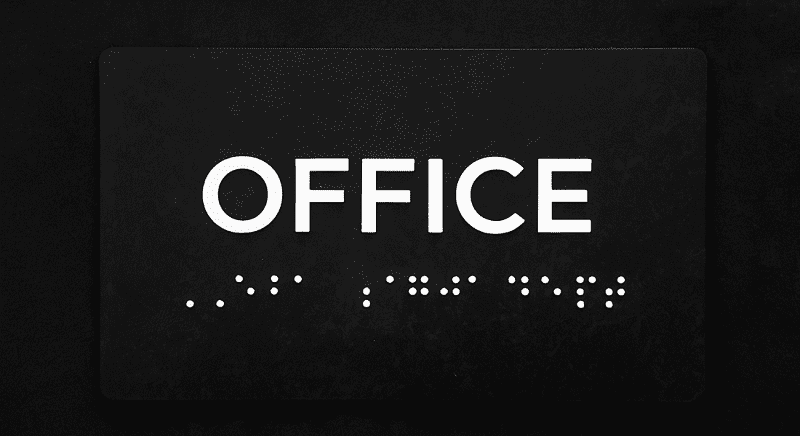
4. ADA Signs – Ensure Accessibility & Compliance
ADA signs (Americans with disabilities act) are required by law and show that your office is inclusive and professional.
Tips for ADA signage:
- Use acrylic, aluminum, or wood with tactile text and Grade 2 Braille.
- Ensure high contrast between text and background.
- Maintain brand consistency while staying compliant.
- Correct placement: near doors, restrooms, exits, and key facilities.

5. Reception Signs
Reception signs communicate important info and make visitors feel welcomed.
Tips for professional reception signs:
- Display prominently at reception or waiting areas.
- Use clean fonts, consistent colors, and modern materials.
- Include content like business hours, check-in instructions, or a “Welcome” message.
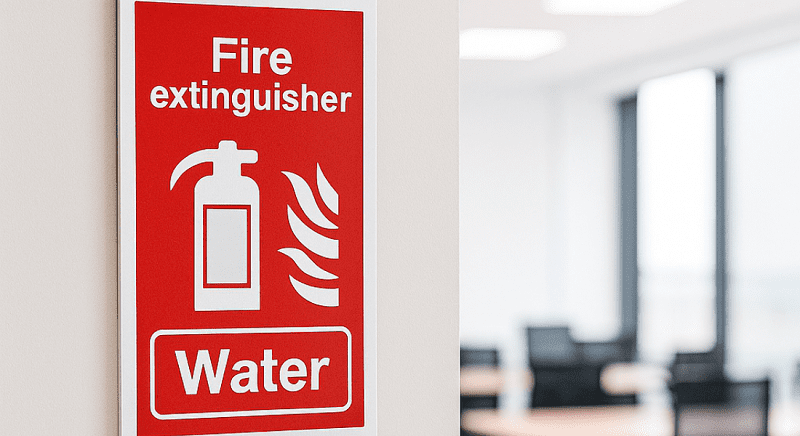
6. Safety Signs
Safety signs ensures compliance and keeps employees and visitors safe.
Tips:
- Use durable materials like PVC, aluminum, or photoluminescent signs.
- Ensure readability with bold text, clear symbols, and high-contrast colors.
- Place near exits, stairwells, fire extinguishers, and high-risk areas.
- Keep signs updated and damage-free.
Why Choose MetroCenter Signworks in Nashville, TN
At MetroCenter Signworks, we design and install custom office signs that fit your office layout and brand identity. Whether you need lobby signs, ADA-compliant signage, or wayfinding systems, our team ensures:
- Clear and readable signage
- ADA compliance and safety
- Stylish, professional, and branded designs
Call us today for a free consultation and quote for your Nashville office.
Summary: Key Takeaways on Interior Office Signage Every Business Needs
- Office signage guides employees and visitors, boosts safety, and strengthens your brand identity.
- The six essential interior office signs are lobby signs, wayfinding signs, directional signs, ADA signs, reception signs, and safety signs.
- Lobby signs create a lasting first impression and anchor your brand in the reception area.
- Wayfinding and directional signs help people move around your office with ease and reduce confusion.
- ADA-compliant signs ensure your office is accessible and welcoming to everyone.
- Custom indoor signage lets you tailor your office environment to reflect your brand personality and values.
- Safety signs protect everyone and keep you compliant with workplace safety regulations.
- Reception area signs organize visitor flow and communicate key info upfront.
- Digital and graphic signs provide engaging, flexible communication that keeps your office environment lively and connected.
If you’re curious about the costs involved in getting the perfect business sign for your office, check out our other blog: How Much Does a Business Sign Cost in Nashville, TN? It breaks down everything you need to know to plan your signage budget with confidence.
FAQs
Q. What are the 6 types of interior office signs?
A. Lobby, Wayfinding, Directional, ADA, Reception, and Safety Signs. Each serves a unique purpose to guide visitors, ensure compliance, and reinforce branding.
Q. Why are lobby signs important?
A. They create a strong first impression and help visitors immediately identify your business.
Q. What are ADA signs?
A. ADA signs include tactile text and Braille, ensuring accessibility for individuals with disabilities.
Q. How do wayfinding and directional signs improve office efficiency?
They guide visitors and employees, reducing confusion and saving time
Q. What materials are recommended for professional office signs?
A. Acrylic, brushed metal, aluminum, PVC, or glass—depending on location and style.
